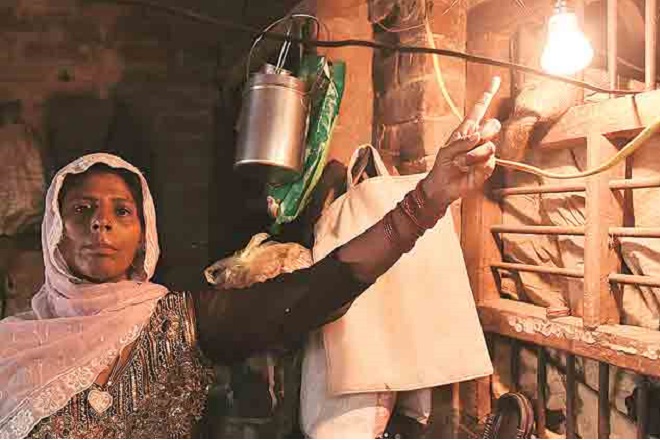Pradhan Mantri Sahaj Bijli Har Ghar Yojana or Saubhagya scheme announced by PM Modi in September 2017 to provide electricity to last willing household has made radical changes in the life of the poor. Public Policy Research Centre (PPRC), a research organization which was directed to provide objective analysis relevant policy issues has provided glowing feedback on impact of the scheme. The Saubhagya scheme has been able to enroll 2 crore beneficiaries out of the intended target of 3 crore said the policy think tank in its assessment report. The Saubhagya scheme aims to achieve 100% electrification in the country by December 2018 and according to data 91 percent of households had access to electricity by August this year.
Read on #PIBBlogs
We crossed the milestone of lighting the lights to 2 crore households under the #Saubhagya scheme on the 19th of November 2018: Power Minister @RajKSinghIndia https://t.co/PZxmTOWH60— PIB India (@PIB_India) November 22, 2018
“We carried out field research in a number of villages in Madhya Pradesh, which completed 100 per cent coverage under the Saubhagya scheme. People in a number of villages in Guna, who struggled to find brides for their grooms earlier, shared their sense of glee at better marriage prospects of their children after their homes got electricity connections under the Saubhagya scheme,” said Vidushi Sahani, research fellow at PPRC. The personal and social life of the people changed profoundly since the households were provided with electricity. There were villages where people had to travel 50 kms to charge mobile phones and this pushed them use mobile phones only in the case of extreme necessities. However, since the electrification people in these households use mobile phones more frequently for essential purposes but also as entertainment source.
The electrification in rural areas has pushed top-down across the world. The reason being inefficiency of market forces to provide electricity to rural areas due to low profits and the risk of incurring a loss. In countries like India where villages are very sparsely populated in some states and regions, market forces shy away from the business of providing electricity to rural areas. Therefore government has to make electricity a public good and take initiatives for last household connectivity. PM Modi government’s Saubhagya scheme was launched with a total project cost of 16,320 crore out of which 12,320 was provided through Gross Budgetary Support (GBS). Under the scheme many poor households identified from Socio-economic and Caste Census (SECC), 2011 data will be given free electricity connections along with LED lights, DC fan and a DC power plug. The repair and maintenance will also be done public money.
The Saubhagya scheme has especially benefited poor states like Bihar which are at the bottom of per capita income but has been able to provide 100 percent electrification after the scheme roll out. The women of households were benefited most from electricity connection at home. Now they can complete their routine work early and spend more time with husbands and their relationship with in-laws also improved given they have more time to care about them. The women of the households are more empowered since electricity connection, “The women are now more assertive in imposing their choices when it comes to watching television programmes. This marks a stark contrast from earlier days when they had to travel to nearby villages to watch such shows,” said Sahani. The marriageable adults of the households also benefited with better marriage prospects.
The social security schemes of the government for women, below poverty line families, divyangs and others in need are expected to be the main poll pitch of the government in the upcoming Lok Sabha election. The Congress governments in last 6 six decades was able to bring a very small percentage of country’s population under social security despite its cry for social justice and welfare state. But the Modi government with its unique schemes has expanded the social security exponentially.
